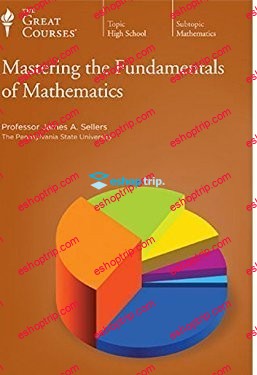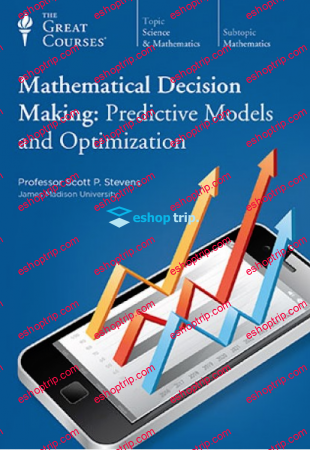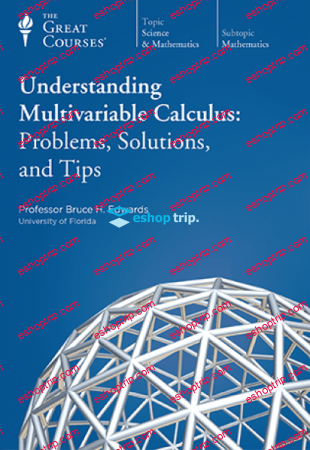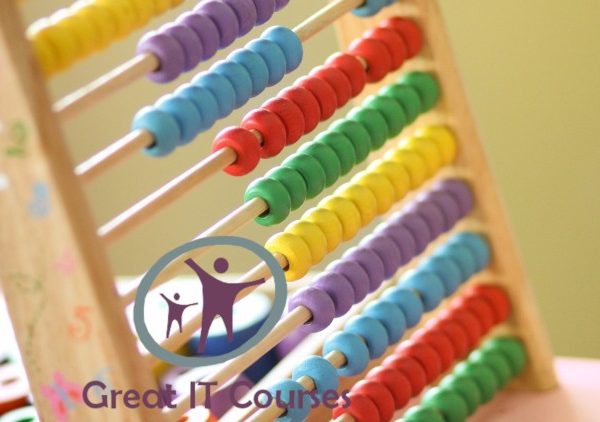Lecturer: Professor James A. Sellers, Ph.D.
Multiplying and dividing large numbers. Simplifying fractions and converting percentages. Handling square roots and exponents. These and other skills are the veritable foundation on which all of mathematics rests. To master them is to unlock the door to more advanced areas of study—such as algebra, geometry, and calculus—and to discover new levels of confidence in dealing with the math of everyday life.
increase your chances of success in high-school and college math classes;
prepare you for a career in a field that requires a strong foundation in math, such as economics, engineering, medicine, and the building trades;
strengthen your everyday critical thinking skills; and
help you handle with confidence everyday tasks such as shopping and planning a personal budget.
Yet despite how basic this kind of math may seem, the mechanics of mathematics remains a mystery to many of us because we’ve been taught to focus solely on our answers. But in the opinion of award-winning Professor James A. Sellers of The Pennsylvania State University, a true understanding of basic math involves more than just arriving at the right solution. It involves
properly understanding the nature of numbers and mathematical concepts,
paying close attention to the step-by-step processes behind different calculations, and
thinking about what you’re solving for—and why you’re solving for it in a specific way.
This more well-rounded approach to the basics of mathematics is a surefire way to strengthen your current knowledge or to gain new skills for more deftly and confidently approaching and dealing with math. And it’s all available to you in Professor Sellers’ engaging course, Mastering the Fundamentals of Mathematics. Using the same inspirational teaching skill and experience he’s brought to his other popular Great Courses in math, Professor Sellers reveals the secrets behind all the key math topics you need to know. In 24 lectures packed with helpful examples, practice problems, and guided walkthroughs, you’ll finally grasp the all-important fundamentals of math in a way that truly sticks.
Explore All the Essential Areas of Basic Math
Designed for lifelong learners of all ages, Mastering the Fundamentals of Mathematics zeroes in on topics that everyone needs to know:
Adding, subtracting, multiplying, and dividing whole numbers, fractions, negative numbers, and decimals
Converting between fractions, decimals, and percentages
Solving real-world problems involving ratios and proportions
Working with whole-number exponents and square roots
With each topic, Professor Sellers shows you how to approach, understand, and solve problems of varying complexity. And, later in the course, he offers brief introductions to more advanced areas of math and prealgebra, including
two-dimensional geometry,
elementary number theory, and
basic probability and statistics.
And whether he’s discussing the order of operations or introducing you to methods for plotting points on a coordinate plane, Professor Sellers shows that the key to facing down more intimidating math problems is by tapping into basic concepts and calculations you’ve already mastered. Like an inspirational instructor who only has your success in mind, he reveals how basic math comes together—and even works together—to help you solve problems such as finding the area of a circle or breaking down a complex word problem involving statistics.Learn Tricks and Shortcuts for Solving Problems
To help you solve problems with greater ease, Mastering the Fundamentals of Mathematics is packed with tips, tricks, techniques, and shortcuts. Here’s just a small sampling of what you’ll find in this course.
Reducing fractions to their lowest terms: When dealing with fractions in math, you’ll often be required to express your answers in the lowest terms to make the fractions easier to understand. So how can you tell when a fraction has been reduced to its lowest term? You’ll know because the only divisor or factor that the numerator (top number) and denominator (bottom number) share is 1. For example, the fraction 4/8 is not in its lowest term because both numbers share a factor of 2.
Adding numbers with different signs: What’s a less complicated way to solve an addition problem such as 7 + (- 3) without using a number line? First, figure out which number has the larger absolute value (7). Then, subtract the other absolute value from this one (7 – 3 = 4) and attach the sign of the number that had the larger absolute value (4). That’s it!
Lining up decimal points: Sometimes, performing calculations with large decimals (such as 153.46 + 5343.3) can be tricky, but the important point is knowing when to align your decimal points. In addition and subtraction problems, it’s essential to line up corresponding digits in a right-justified way to get the correct answer; with multiplication and division, however, this alignment is unnecessary.
Calculating tips in your head: Do you always find yourself unsure of how much of a tip to leave? Knowing how to work with percentages and decimals makes it easy. To calculate a 15% tip, take 10% of the bill just by moving the decimal point one place to the left (example: $12.00 would be $1.20). Then, add half of that number ($0.60) to that amount and you’ve got the answer ($1.80). If you want to leave a 20% tip, take 10% of the bill ($1.20) and just double it ($2.40).
An Interactive, Engaging Way to Learn Math
An added feature of Mastering the Fundamentals of Mathematics is its interactive nature. At specific points in a given lecture, Professor Sellers gives you a problem and invites you to pause the course, try your best to solve the problem, and then continue the course to check youranswer alongside his and chart your personal progress. Oftentimes, Professor Sellers roots his practice problems in everyday scenarios in which you’re likely to find yourself, such as paying for groceries and tipping at restaurants.
Plus, he’s crafted a free, comprehensive workbook with a complete answer key to go along with his course—one that comes filled with additional practice problems on each topic he covers in the course.
Yet even with its wealth of practice problems and exercises, what makes this course so rewarding is ultimately Professor Sellers himself. As Director of Undergraduate Mathematics at The Pennsylvania State University, he’s in the unique position of knowing the specific areas math students have trouble with—and the specific ways to help them over these common hurdles. Calm and clear, this winner of the Teresa Cohen Mathematics Service Award is a constantly encouraging presence who refuses to let you give up and helps you prove to yourself that you can be successful in math.
So whether you’re just setting out on your mathematical journey or whether you simply want to rediscover what you’ve forgotten, you’ll find Mastering the Fundamentals of Mathematics to be an invaluable guide to an invaluable subject.











Reviews
There are no reviews yet.